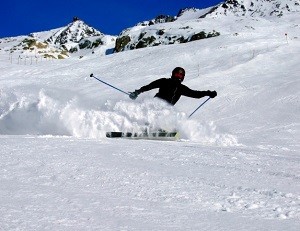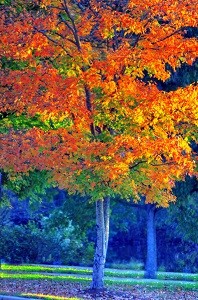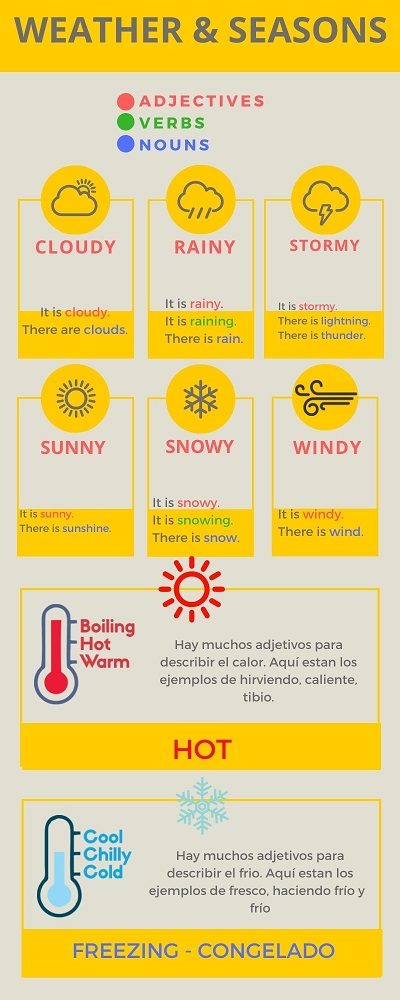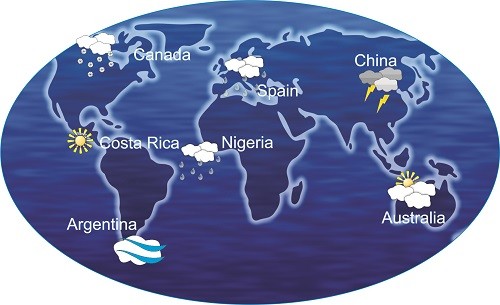- Recent
WHAT WILL WE LEARN?
- Welcome to MONTHS, WEATHER AND SEASONS
- Months flashcards - Months video
- Weekdays Flashcards - Days of the week video
- Choose the correct day
- Weather Flashcards - Seasons and weather video
- Pronunciation Practice #1 to 8
- Weather and seasons poster
- Weather and season flashcards
- Order the sentences
- Drag & drop
- Listen & write
- Specific questions for seasons and weather
- Look and write
- Dialogue - Complete the dialogue
- Listen and fill in - Read and answer
MONTHS, DAYS OF THE WEEK, WEATHER AND SEASONS
En esta unidad vamos a aprender el vocabulario de MONTHS, DAYS OF THE WEEK, WEATHER AND SEASONS, el afianzamiento del presente continuo con más vocabulario para el tema de weather haciendo la diferenciación de los adjetivos, verbos y sustantivos y el uso del verbo "haber" THERE IS / ARE.
MONTHS
|
SPANISH |
ENGLISH |
PRONUNCIATION |
| Enero | January | Ya-nu-ery |
| Febrero | February | Fe-bui-ery |
| Marzo | March | March |
| Abril | April | Eipril |
| Mayo | May | Mei |
| Junio | June | Yun |
| Julio | July | Yu-lai |
| Agosto | August | A-gust |
| Septiembre | September | Sep-tem-ber |
| Octubre | October | Ac-to-ber |
| Noviembre | November | No-vem-ber |
| Diciembre | December | De-sem-ber |
DAYS OF THE WEEK
|
SPANISH |
ENGLISH |
PRONUNCIATION |
| Lunes | Monday | Mon-dei |
| Martes | Tuesday | Tuz-dei |
| Miercoles | Wednesday | Wenz-dei |
| Jueves | Thursday | Zurz-dei |
| Viernes | Friday | Fri-dei |
| Sábado | Saturday | Sa-dur-dei |
| Domingo | Sunday | Saen-dei |
SEASONS
En español utilizamos los artículos con las estaciones, EL INVIERNO, en inglés no se usa con ningun artículo.
|
SPANISH |
ENGLISH |
PRONUNCIATION |
| Primavera | Spring | Spring |
| Verano | Summer | Sa-mer |
| Otoño | Fall / Autumn | Fal / A-tum |
| Invierno | Winter | Win-ter |
En los países anglosajones hay estaciones pero en los latinoamericanos no las hay. Vamos a aprender las anteriores estaciones, en qué meses del año se dan y cómo describirlos:
Winter: Se da en los meses de DECEMBER, JANUARY, FEBRUARY
Spring: En los meses de MARCH, APRIL, MAY
Summer: En los meses de JUNE, JULY, AUGUST
Fall: En los meses de SEPTEMBER, OCTOBER, NOVEMBER.
WEATHER-NOUNS-VERBS (el clima, sustantivos, verbos)
En inglés para formar la conjugación del infinitivo (terminaciones ar, ir y er) se coloca to antes del verbo. Ejemplo llover: to rain. A continuación están algunos sustantivos y verbos relacionados con el clima:
| SPANISH | ENGLISH | PRONUNCIATION |
| lluvia / llover | rain / to rain | rein (no se dobla la r) |
| viento | wind | wind |
| nieve / nevar | snow / to snow | sno |
| sol | sun | san |
| truenos | thunder | zean-der |
| relampago | lightning | lait-nin |
| tormenta | storm | storm |
| brisa | breeze / to breeze | briz |
| rayos de sol | sunshine | saaan-chain |
| congelar | to freeze | fri-iz |
WEATHER-ADJETIVOS
En la siguiente tabla encontrarán adjetivos que se formaron de sustantivos estos terminan en -y.
|
SPANISH |
ENGLISH |
PRONUNCIATION |
| frio | cold | cold |
| caliente | hot | jat |
| asoleado | sunny | sa-ní |
| nublado | cloudy | clau-dí |
| tormentoso | stormy | stor-mí |
| cálido | warm | warm |
| fresco | cool | kul |
| con nieve | snowy | sno-wí |
| lluvioso | rainy | rei-ní |
| con viento | windy | win-dí |
| congelado | freezing | friz-zin |
| frio (no tanto como cold y mas que cool) | chilly | chi-lí |
| con brisa | breezy | bri-zí |
Cada estación tiene un clima característico vamos a aprender a describirlo:
Winter: Cold and snowy.
Spring: Warm and rainy.
Summer: Hot and sunny
Fall: Cool and windy
Después de aprender el vocabulario nuevo, aplicaremos este a las conjugaciones vistas y el uso de las preposiciones del tiempo.
Hablar del clima es un tema muy común para comenzar una conversación. Las personas suelen saludarse, preguntar como están, presentarse si es el caso y hablar del clima. Esto se llama chit-chat (charla informal). Generalmente se utilizan expresiones del tiempo como:
| SPANISH | ENGLISH | PRONUNCIATION |
| hoy | today | tu-dei |
| mañana | tomorrow | tu-ma-row |
| esta noche | tonight | tu-nait |
| mañana | in the morning | moor-nín |
| tarde | in the afternoon | af-ter-nun |
| noche | in the evening | iv-nín |
| semana | week | wik |
| mes | month | monz |
Estas expresiones se utilizan con los adjetivos demostrativos:
This morning is cold. - Está mañana esta fría.
Today is really stormy. - Hoy esta realmente tormentoso.
This week is hot. -Esta semana está caliente.
In: Se utiliza con las partes del día, meses y las estaciones. In July, in Summer, in the morning.
On: Se utiliza con los días de la semana. On Monday.
No se utilizan con today, tomorrow o tonight.
THERE IS/ARE
Con este tema vamos a aprender a utilizar el THERE IS / THERE ARE - verbo haber. En inglés no se conjuga pero tiene singular y plural, según la combinación del verbo to be.
There is rain. -Hay lluvia.
There are snowflakes on the window. - Hay copos de nieve en la ventana.
Se conjuga igual que el verbo to be:
Afirmativo: There + to be + sustantivo.
Ej.: There is a lot of sunshine in summer. -Hay muchos rayos de sol en el verano.
Negativo: There + to be + not + sustantivo.
Ej.: There isn't any thunder. -No hay truenos. (any se traduce a algunos y es muy común en inglés y se utiliza mucho en las oraciones negativas e interrogativas.
Interrogativo: To be + there + sustantivo.
Is there thunder in the storm? -¿Hay truenos en la tormenta?
Especifico: Pronombre/Adjetivo Interrogativo + to be + there?
Ej.: How rainy is it? -¿Qué tan lluvioso está?

Today it is very cloudy.

It is summer and it is hot and sunny.

It is winter and it is cold and snowy.

It is raining.

In spring it is warm and rainy.

It is summer but it is windy today.

It is fall and it is windy today.

It is stormy tonight.

- there
- a lot of
- Today
- wind.
- is
- It
- storm.
- is
- is
- There
- raining.
- a
- from
- snowy.
- February.
- Winter
- to
- is
- It's
- December
sunny is it today?
It's Fall, but it isn't it's sunny
What a beautiful day! a lot of sunshine
Summer is hot and It isn't cold.
SPECIFIC QUESTIONS FOR SEASONS AND WEATHER:
Hasta el momento hemos estudiado mucho vocabulario de las estaciones y del clima. Vimos cómo se diferencia la estructura gramatical si el vocabulario es adjetivo, verbo o sustantivo.
REPASO:
Para los adjetivos y verbos es la estructura del verbo to be.
Para los sustantivos es con el verbo haber THERE IS /ARE.
Ahora vamos a aprender diferentes maneras para preguntar por el clima:
| SPANISH | ENGLISH | EXPLICACIÓN |
| ¿Cómo esta el clima? | How is the weather? | Esta traduccion es literal. |
| ¿Cómo esta el clima? | What is the weather like? | Está no es literal. La palabra "like" no se traduce a gustar en este contexto sino a parecerse. Y su traducción sería algo así como ¿A que se parece el clima? pero este no tiene sentido en español. |
Recomendamos que se aprendan estas preguntas en contexto y comprender que las dos son muy utilizados para preguntar cómo está el clima.
EJEMPLOS
No hay una sola forma de responder, es más o menos lo que analizamos en saludos, la respuesta se da es según el interlocutor, su contexto y cultura.
What's the weather like?
a. There is a thunderstorm.
b. It is snowing.
c. It is nice.
d. There is a breeze.
Como pueden ver cualquiera de las estructuras se pueden utilizar para contestar.
También tenemos preguntas específicas con los adjetivos interrogativos, recordemos que es el pronombre interrogativo + sustantivo que forma el adjetivo interrogativo. En este caso sería con el vocabulario de sustantivos del clima. Se utiliza más que todo con HOW MUCH (cuánto), este está en singular y profundizaremos en esta pregunta con los contables y no contables. Se hace la pregunta con el there is.
FÓRMULA: How much + sustantivo + is + there? Ejemplo: How much breeze is there? - ¿Cuánta brisa hay?
Se responde con
a lot - bastante
not much - no mucho
there isn't any + noun - no hay + sustantivo
kind of -mas o menos

Hi, I am Peter Holmes. I am 30 years old. I am from Toronto. It is in Canada. The weather is very cold most of the year. It is snowy in fall, winter and spring. Summer is nice and sunny. Today is the first day of Spring. It is very cold and it is snowing at the moment. I am wearing a jacket and a sweater. I am also wearing snow boots.





